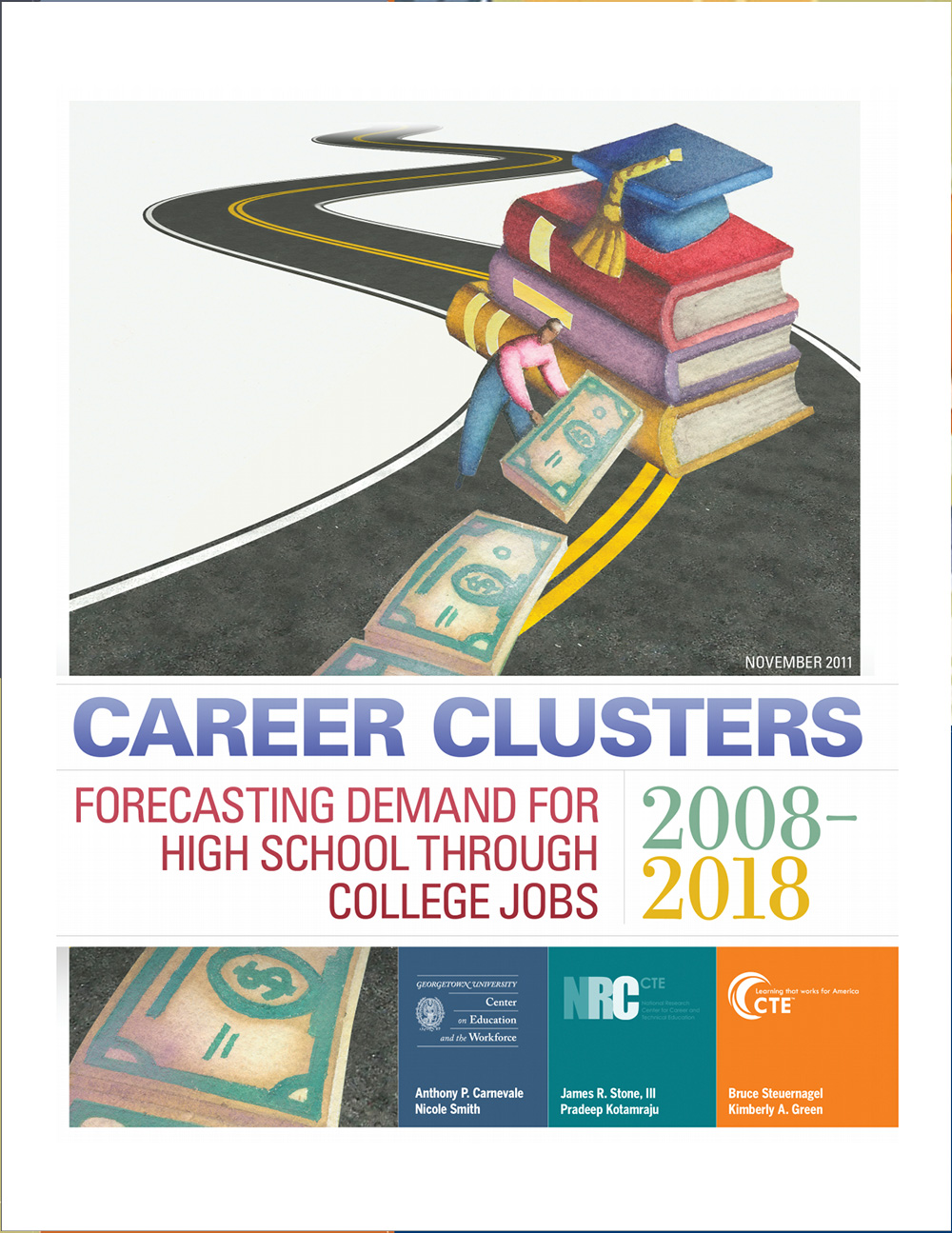Career Clusters
Forecasting Demand for High School through College Jobs
A postsecondary education is the best path to the middle class, but others exist. Career Clusters: Forecasting Demand for High School through College Jobs examines the most promising opportunity for job seekers of varying education levels.
Key Findings
Interactive Map
Gender Wage Gap Interactive Tool: Explore the data on the gender wage gap by college major using our interactive tool.
Source: Georgetown University Center on Education and the Workforce analysis of American Community Survey, 2009–2016 (pooled) of bachelor’s degree holders without advanced degrees, age 25-59 working full-time full-year.
Resources
The best pathway to the middle class is through postsecondary education, but not everyone goes directly from high school to college. Are those who enter the workforce directly from high school doomed to work minimum wage jobs? In Career Clusters, we examine which sectors of the labor market afford individuals the best route to a middle-class income. Using forecasts, we identify the most promising clusters for job seekers with a high school diploma or less, middle skills such as a certificate or Associate’s degree, and those with Bachelor’s degrees or better.

